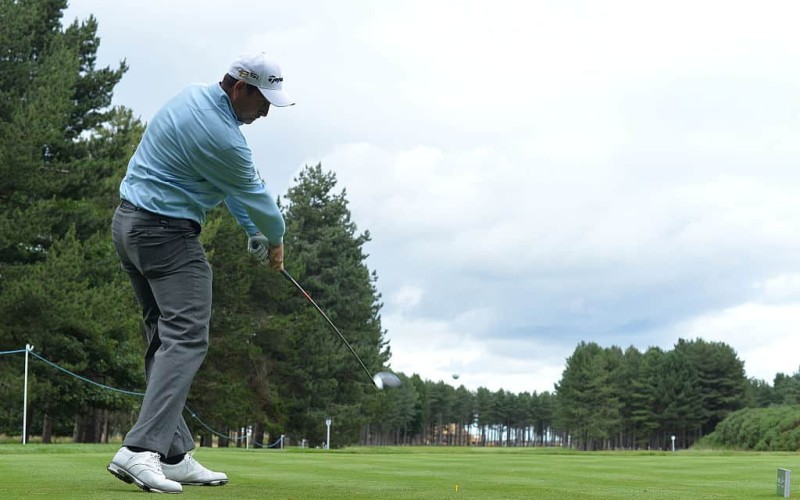There are wonderful and iconic golf courses in every corner of the globe but nowhere does golf form such a prominent part of the landscape, community and history as Scotland.
I have travelled the world playing golf now for 25 years and I have been lucky enough to have seen many of the world’s greatest courses. Many’s the time I have stood back in awe of a magnificent backdrop, a tee perched out into the sea, for instance, at New South Wales Golf Club in Sydney.
The magnificence of the oak tree that frames the 18th green at Sunningdale, as simple as it is, left an imprint on my mind the first time I saw it, that has never left me. Watching aghast as a pro-am partner wandered unwittingly right across the centre of the green on a Melbourne sand belt course whilst dragging his trolley behind him – I had certainly never seen that before. So good are the greens, hard and fast and compact that a trolley tyre couldn’t damage the green if you tried. This truly amazed me.
I’ve been to some of the best man-made courses, the Stadium Course at TPC Sawgrass, Ponte Vedra, Florida, and Le Golf National, Paris, to name just two. But for me, as a man who loves the game of golf there is nowhere quite like a Scottish golfing town. Nowhere does golf form such an integral part of the community as it does in Scotland.
The #ASIScottishOpen Champion 🏆 @BrandonMStone pic.twitter.com/wKoYwNPR4T
— Scottish Open (@ScottishOpen) July 15, 2018
I had a free reign to write about anything this month, but it was soon after I arrived in Gullane, on Scotland’s Golf Coast, west of Edinburgh that I knew I had my subject. This is golfing country unlike any other. Magnificent Muirfield is at the centre of this 21-golf course collection, but tucked away a few hundred yards from the main road – you would have to describe it as being ‘tucked away’ in these parts.
Gullane, however, smacks you right in the face. Its numerous courses meander down into the heart of this little village. If you lived here, you would find it hard to ignore the game of golf. It’s as if the town has grown up around the golf not the other way around.
Just five miles down the road and you hit North Berwick, but not before you have passed Archerfield and the Renaissance Club, two of the new kids on the block in these parts. It tells a story itself that these clubs are thriving, despite having so many illustrious courses for neighbours. Such is the demand, thriving they certainly are. So then you arrive in North Berwick, a coastal town with architecture that seems to mimic St Andrews, only on a slightly smaller scale.
You can tell in an instant what a gem of a course it is. Humps and hollows; firm, fast fairways – 9 holes out, 9 back, with the sea breeze forever changing the challenge. It’s golf as nature intended. The18th hole, bordered by white railings signifying the end of the course and the start of the town, meander menacingly down the right hand side, and the clubhouse, sitting proudly between golf and the world at large.
For me, it’s like walking into a museum, but one where you can lift the artefacts off the wall and have a good old play, and be actively encouraged to do so. In these towns being a non-golfer puts you in a minority, but it’s not fair-weather golf we are talking about. It’s a-way-of-life type of golfer you find around here.
The little details make all the difference ✂️ pic.twitter.com/dTiqSdZApx
— The Open (@TheOpen) July 17, 2018
When a tournament comes to town, the spectators know their stuff. They know a great shot when they see one – a long pitch and run or a bullet drive under the wind, and you will be told as much from their reaction. In these parts they are not wowed by a smashed drive high into the sky. They appreciate a little bit of craft, a shot nudged in under the wind, a putter from 40 yards, the kind of shots that wee-in week-out Tour players don’t need to use.
Scotland is the Home of Golf. The game is part of the national psyche. It seems every time I come here I am reminded of the fact. Tom Watson got the same feeling, too, and that’s why he fell in love with the place, and, eventually, links golf. If you haven’t been, then I’d suggest you give it a go, and Scotland’s Golf Coast would be a good place to start.
Of course, Carnoustie hosts The Open this year, possibly the hardest of all the courses on the rota. I remember turning up for my afternoon tea time in 1999 and seeing the scores then looking at the faces of the players who had already played. They were ashen, almost in shock it seemed. The rough was so brutal you had no choice but hack out sideways. In reality, it was too difficult. Who can forget the finish there when Jean Van de Velde, with all his French gallic charm, fell at the final hurdle. As a sportsman it was horrific to watch. Never have I willed a putt into the hole as strongly as I did for Jean at that moment. It was the bravest putt I have ever seen. It didn’t work out for Jean in the playoff and Paul Lawrie grabbed his opportunity with both hands and became the first home- grown winner since Sir Nick Faldo.
I can only see more drama coming this year. The last four holes are like something out of a black comedy. Not because they are silly holes, oh no! The holes are brilliantly designed, but come as they do, at the end of the round, when the nerves are frayed and resilience is waning, they take you to the brink. To win The Open at Carnoustie takes enormous courage. Whoever takes home the Claret Jug will be the most deserving of champions.










